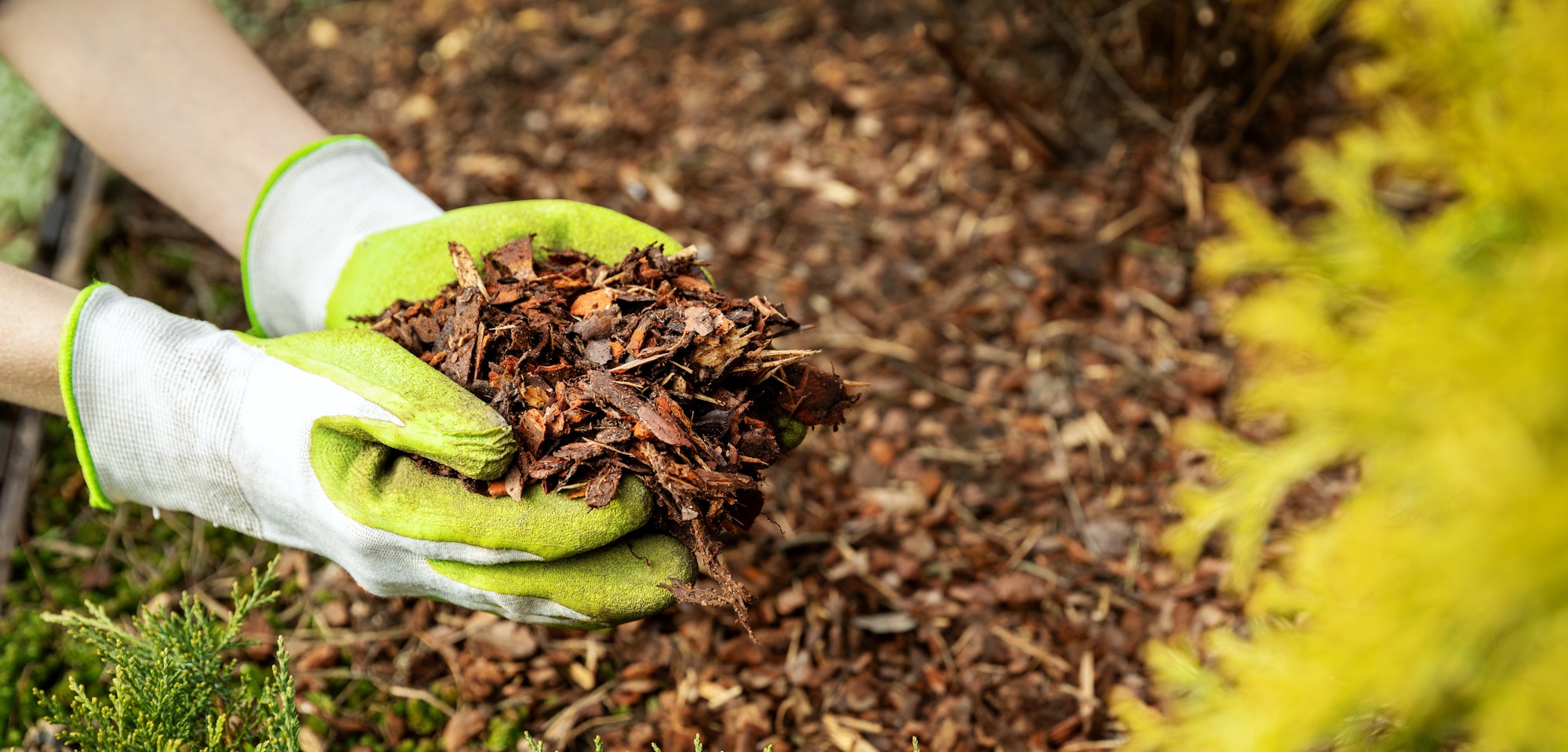A Blanket for the Garden

How Mulch and a little help from NID can get your yard ready for winter
October is upon us, and the signs of fall are unmistakable. Tomato plants slow down, sunflowers start to bow, and crisp mornings hint that summer has finally stepped aside. The garden, once buzzing with growth, begins to quiet, signaling fall has arrived.
For many gardeners, this is the time to start winding things down by cutting back plants, clearing beds, and prepping the landscape for winter. One of the simplest and most effective ways to do that is with something surprisingly low-tech: mulch.
“Think of mulch like a warm blanket,” says NID Water Efficiency Technician Kaycee Margherita. “It protects your plants, improves your soil, and helps retain moisture during the colder, drier months.”
Even better? This fall, all NID customers can receive up to $50 back through the District’s mulch rebate program, making it easier than ever to prep your garden and save a little money while you do it.
Why fall season mulching matters
Mulching is often associated with springtime gardening, but fall may be the most important time to do it. As nighttime temperatures drop and the weather becomes more unpredictable, mulch plays a crucial role in a variety of ways. It insulates plant roots from freezing temperatures, and it suppresses winter weeds before they get a foothold. Mulch also helps stabilize the soil’s temperature by reducing swings that can stress plants or disrupt dormancy. A good mulch layer creates a steady environment where roots and soil life can rest and regenerate through winter.
So what is mulch, exactly? At its simplest, mulch is any material spread over the surface of the soil to help conserve moisture, suppress weeds, and protect plant roots. In the fall, organic mulch is the go-to. That means material like wood chips, shredded bark, straw, pine needles, or even fallen leaves. As these materials slowly break down over the winter, they improve soil structure and nourish the ecosystem beneath the surface, giving your plants a healthier foundation when spring returns.
Wait until the first frost
The best time to apply fall mulch is after the first frost but before the ground freezes. This timing allows the soil to naturally cool down while protecting it before temperatures drop too low.
When is the first frost?
- Grass Valley: around November 5
- Nevada City: around November 10
- Penn Valley: between November 11 and 20
- Auburn and Lincoln: around December 1.
Use these dates as a flexible guide, not a guarantee. These are all estimates from the Old Farmer’s Almanac and based on calculations from the National Oceanic and Atmospheric Administration (NOAA).
How to mulch
Once the frost hits, it’s time to get started. Here are some tips from the UC Master Gardeners of Nevada County. To mulch properly:
1. Clear out dead plant material and weeds.
2. Spread mulch 3 to 6 inches thick over soil and around the base of plants.
3. Allow 3-to-12 inches of space around stems and trunks to prevent moisture-related rot or pest issues.
4. Avoid compacting the mulch, so air and water can still move through.
That’s it; no fancy tools, no complicated steps. Just a layer of mulch to protect your landscape while it rests.
“Late fall is a good time to apply organic mulches around your plants to help retain water, feed the soil and improve soil structure,” said Ann Wright, President, UC Master Gardeners of Nevada County. “Applying mulch now will also help with pests by smothering last year’s insect eggs, spores, and weed seeds. (For fire suppression, consider the use of gravel or decomposed granite mulch within 5-feet of homes or structures.)”
NID offers mulch rebates
NID is helping customers take the next step toward healthier landscapes and water savings with a mulch rebate program. Customers can receive up to $50 back as part of the District’s water efficiency efforts, which encourage sustainable choices that benefit both yards and the community’s water supply.
How it works:
Customers may purchase mulch from any vendor, but must first request an NID voucher. The voucher is valid for 30 days. To redeem it, applicants submit a copy of their sales receipt along with proof of mulch installation. Usually, that is just a photo of the mulched area. The rebate is then applied as a credit to the customer’s NID account.
The rebate covers the actual cost of the mulch, up to $50, whichever is less. Please note that tax, delivery, and installation costs are not included.
“We’re excited to help customers take simple steps that make a big difference, and make every drop count,” Margherita said. “This rebate makes it easy to save water, protect your landscape, and reach conservation goals.”
The program is available now at www.nidwater.com/rebates. For voucher requests or questions about NID’s other rebate programs, contact Kaycee Margherita at 530-273-6185 ext. 1244 or email strongk@nidwater.com.
A small step with big impact
Mulching might not feel like a big job, but it pays off with not only healthier plants and better-looking yards, but in long-term water savings, reduced maintenance, and improved soil health.
And with NID’s help, it’s also a chance to save a little money while doing the right thing for your landscape.
So whether you’re working with a full backyard garden or just a few flower beds, don’t overlook the power of mulch this fall. Your garden, and your water bill, will thank you when spring rolls around.
